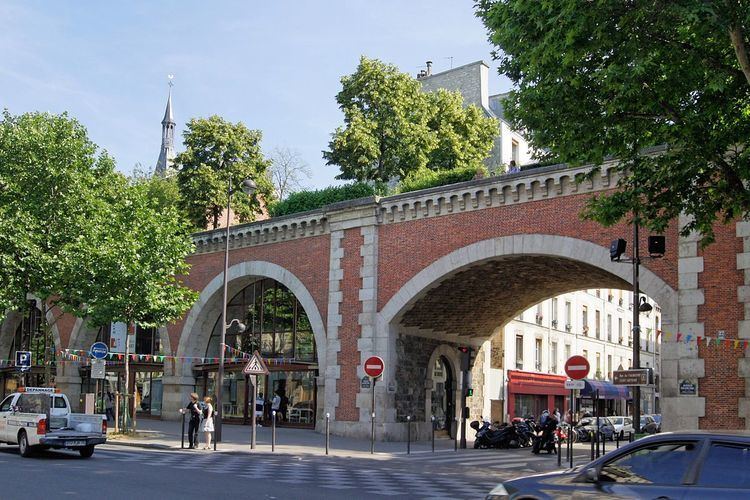Country France Phone +33 1 71 18 75 68 Architect Patrik Berger | Opened 1994 Construction started 1990 | |
 | ||
Type Infrastructure rehabilitation Location Paris 12th Arrondissement Address 10 Cour du Marché Saint-Antoine, 75012 Paris, France Hours Closed now Sunday11AM–5PMMondayClosedTuesday11AM–7PMWednesday11AM–7PMThursday11AM–7PMFriday11AM–7PMSaturday11AM–7PMSuggest an edit Similar Coulée verte René‑Dumont, Reuilly ‑ Paul Pernin G, Gare de la Bastille, Bois de Vincennes, Palais de la Porte Dorée | ||
The Viaduc des Arts - located in Avenue Daumesnil 1-129, in the 12th arrondissement of Paris, France - is a rehabilitation of the former “Viaduc de Bastille” carrying the railways of the Paris-Bastille - Vincennes train line. This rehabilitation project was designed in 1988 by the architect [[Patrick Berger]] under the direction of the SEMAEST (Société d’Economie Mixte d’Aménagement de l’EST de Paris). It is hosting a section of the Promenade Plantée, and many art galleries and shops.
Contents
Le viaduc des arts
History
In 1853, the private company “Société de Chemin de Fer Paris Strasbourg” was granted to build a train line crossing Paris 12th arrondissement from Bastille to Verneuil l’Etang, going through Vincennes. This project implied considerable works such as digging tunnels or building infrastructure objects such as the “Viaduc de la Bastille” a 1,5 km long viaduct made of 64 vaults. The train line was opened in 1859, but ceased in 1969 after the creation of the RER A line into which a part of the line was integrated, while the Paris-Vincennes was completely abandoned.
In 1979, the APUR (Atelier Parisien d’Urbanisme) was commissioned to rethink the disused viaduct that follows the Rue de Lyon and the Avenue Daumesnil, along with the choice of reconverting the station of Bastille into a new Opera house (Opera Bastille). Two options came up for the future of the viaduct :
But the presence of well maintained building directly behind the viaduct dismissed the first option. In fact, the rehabilitated viaduct could host many activities and constitute a much more welcoming façade for the Avenue Daumesnil.
In 1983, the implementation of the “Promenade Plantée” linking Place de la Bastille to Bois de Vincennes constituted one of the most important projects for the revitalization of the Eastern neighbourhoods of Paris. The project was run by landscape architect Jacques Vergely and architect Philippe Mathieux.
In 1988, the proposition of the architect Patrick Berger was chosen for the reconversion of the arcades into a strip of art galleries, and the first part of the promenade plantée (from Rue Picpus to Rue Michel Bizot) was opened one year later. The inauguration of the vaults started in 1994 until 1997 when the last vaults were opened.
The design of the rehabilitation project mainly consist on cleaning the viaduct and closing the vaults with a glass wall on the two sides. The central part of the arches were cleared out in order to add relief in the façade and let the shadow underline the curved shape. This intervention enabled the use of the 64 vaults whose size varies between 150 and 460 m² and the implementation of a strip of art galleries and cafés.
